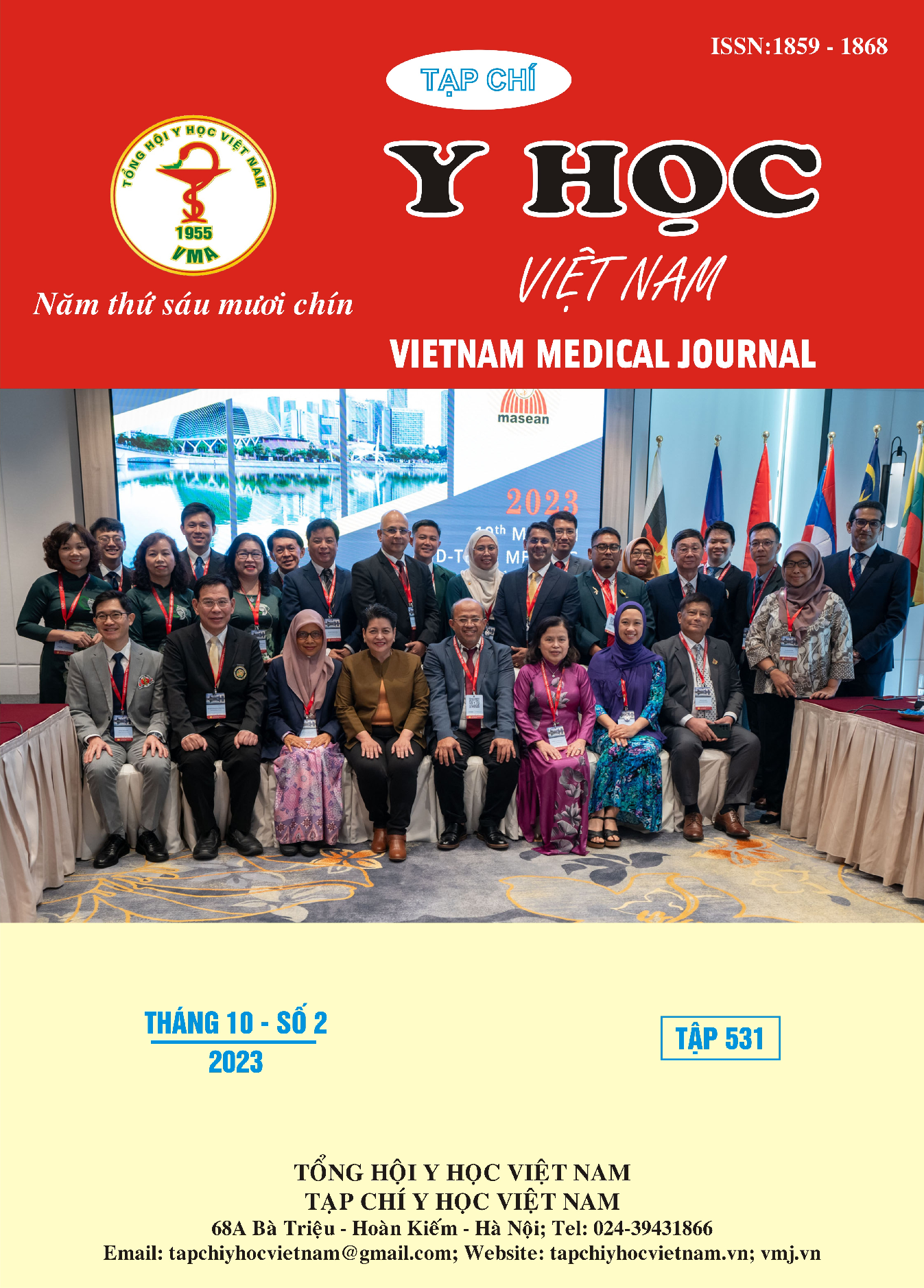CLINICAL FEATURES, COMPUTER TOMOGRAPHY IN PATIENTS WITH MANDIBULAR FRACTURES AT VIET DUC UNIVERSITY HOSPITAL IN 2018-2023
Main Article Content
Abstract
Objectives: To describe clinical features, CT-scanner of patients with mandibular fractures at the Department of Maxillofacial Surgery, Plastic, and Aesthetics, Viet Duc University Hospital in 2018-2023. Subjects and methods: A cross-sectional descriptive study of patients with mandibular fractures were diagnosed and treated at the Department of Maxillofacial Surgery, Plastic, and Aesthetics, Viet Duc University Hospital from 01/2018-01/2023. We collected the medical record and the data was analysed by SPSS software. Result: The sample included a total of 505 subjects and the average age of all subjects was 31,83, the range of age was from 18 to 73 years old, and the male-to-female ratio of 5,82; the major reason for mandibular fractures is motor vehicle accidents with 92,48%. Clinical features: bruising and swelling of trauma region (97,62%), sharp pain at the fracture site (98,61%), malposition of fractures across dental arch (97,23%) that all of them are the most common signs, followed by malocclusion (90,5%) and trismus (75,84%). The classification of mandibular fractures by injury regions identified by the CT-scanner: symphysis fracture (66,14%), body fracture and angle fracture (more than 25%), coronoid (0,99%), the patient may have one or some fractures at the mandible. The associated facial injuries included: maxillary fractures (49,4%) and zygoma fractures (31,2%) were the most common and the rare injuries are facial nerve injury and ophthalmology trauma. Organ trauma was also considered as that brain injury was the highest rate (30,6%), limb injury (14,8%) but chest trauma, abdominal trauma, and cervical injury were significantly lower in proportion. Conclusion: Mandibular fractures are mainly seen in men aged 18 to 73, the most common cause is motor vehicle accidents, accounting for 92,48%. The clinical characteristics are not completely homogenous, but the diagnosis is exactly by CT-scanner. The concomitant injuries of the maxillofacial region encountered in these patients may be fractures of the maxilla (49,11%), zygoma (31,29%), ophthalmology trauma(2,18%), and facial nerve injury (0,4%). Some other organ trauma associated with mandibular fractures can include brain (30,3%), extremities, chest, abdomen, and cervical trauma.
Article Details
Keywords
mandibular fractures, Viet Duc University Hospital
References
2. Trường TV, Trương Mạnh Dũng. Tình hình chấn thương hàm mặt tại viện răng hàm mặt Hà Nội trong 11 năm (từ 1988- 1998) trên 2149 trường hợp/ 1999
3. Gutta R, Tracy K, Johnson C, James LE, Krishnan DG, Marciani RD. Outcomes of mandible fracture treatment at an academic tertiary hospital: a 5-year analysis. J Oral Maxillofac Surg Off J Am Assoc Oral Maxillofac Surg. 2014;72(3):550-558.
4. Hsieh TY, Funamura JL, Dedhia R, Durbin-Johnson B, Dunbar C, Tollefson TT. Risk Factors Associated With Complications After Treatment of Mandible Fractures. JAMA Facial Plast Surg. 2019;21(3):213-220.
5. Kim MY, Kim CH, Han SJ, Lee JH. A comparison of three treatment methods for fractures of the mandibular angle. Int J Oral Maxillofac Surg. 2016;45(7):878-883.
6. James J, Farrell T, Stevens M, Looney S, Faigen A, Anderson J. Time to Open Repair of Mandibular Fractures and Associated Complications. J Oral Maxillofac Surg. 2020;78(1):101-107.
7. Joshi UM, Ramdurg S, Saikar S, Patil S, Shah K. Brain Injuries and Facial Fractures: A Prospective Study of Incidence of Head Injury Associated with Maxillofacial Trauma. J Maxillofac Oral Surg. 2018;17(4):531-537.
8. Mukherjee S, Abhinav K, Revington P. A review of cervical spine injury associated with maxillofacial trauma at a UK tertiary referral centre. Ann R Coll Surg Engl. 2015;97(1):66-72.


